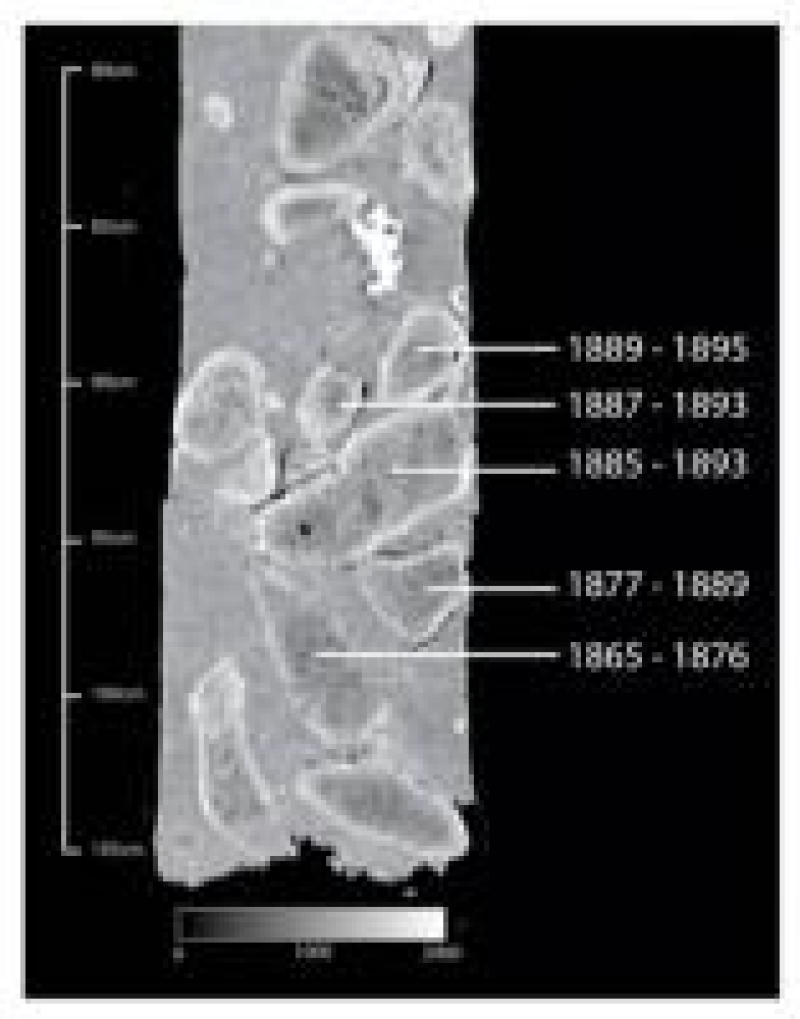Centre for Microscopy and Microanalysis, University of Queensland (UQ)
Type of resources
Topics
Keywords
Contact for the resource
Provided by
Years
Formats
status
-

Trajectories of decline have been observed in coral reefs throughout the Caribbean and Indo-Pacific region attributable to the synergistic effects of human-induced disturbances. Whilst direct and indirect evidence suggests that inshore reefs from the Great Barrier Reef (GBR) are showing signs of regional decline following European settlement in the mid 18th century, it has proven difficult to ascertain the link between anthropogenic disturbance and coral degradation on a regional scale. This is primarily due to the absence of detailed ecological baselines on the past condition of many of these reefs prior to the advent of long-term monitoring in the mid 1980’s. An understanding of the timing, frequency, duration and cause of mortality events in hard coral communities is necessary to help direct management efforts towards ameliorating potential impacts. Furthermore, assessing the spatial and temporal variability of changes in community structure before and after European settlement, will provide an invaluable management tool to overcome the ‘shifting baseline’ syndrome. By dating and mapping historical changes in coral communities of inshore reefs of the GBR, the purpose of this study is to provide a detailed baseline assessment on coral community structure and an accurate chronology on the history and nature of mortality events. Dead coral skeletons have been dated using the highly-precise (2? ± up to 1 year) thermal ionisation mass spectrometry (TIMS) uranium-series (U-series) dating method in order to determine 1) the timing of historical mortality in coral communities and massive Porites corals in the Palm Islands region (central Inshore GBR) and reefs adjacent to catchments in the southern GBR (Mackay region) and far northern GBR, 2) historical patterns of storm occurrence on the offshore GBR (One Tree and Heron Reefs), and 3) Holocene sea level changes from the inshore GBR (Magnetic Island). So far, more than 320 samples have been dated at the Radiogenic Isotope Facility, University of Queensland. Our results have revealed shifts in coral community structure and a loss of previously dominant Acropora corals in the early 20th century in the Palm Islands region. It is theorized that this loss may be attributable to the synergistic impacts of declining water quality and climatic related factors. Analysis of uplifted reef blocks from the offshore GBR reveals a period of high storm activity throughout the 19th & 20th centuries. Furthermore, U-series dating of fossil massive corals from Magnetic Island suggests that sea level was higher than present around 2200 to 7000 years ago during the Holocene. Overall, our results show that U-series dating and palaeoecological approaches can provide unique insight into the GBR’s past. Data Units: U-series age (AD) ± 2-sigma error References: - Yu K. F. and Zhao J. X. (2010) U-series dates of Great Barrier Reef corals suggest at least +0.7 m sea level ~7000 years ago. The Holocene 20, 1-8. - Zhao J. X., Neil D. T., Feng Y. X., Yu K. F., and Pandolfi J. M. (2009) High-precision U-series dating of very young cyclone-transported coral reef blocks from Heron and Wistari reefs, southern Great Barrier Reef, Australia. Quaternary International 195, 122-127. - Zhao J. X., Yu K. F., and Feng Y. X. (2009) High-precision 238U-234U-230Th disequilibrium dating of the recent past - a review. Quaternary Geochronology 4, 423–433.
-
This project will investigate how coral communities along the Great Barrier Reef have historically responded to acute (e.g. cyclones) and chronic (e.g. water quality) disturbances using pioneering high-precision geological dating and palaeoecological techniques, combined with high-resolution geochemical analysis of coral records. This project will determine high resolution chronological records on different time scales over the past 1-2 millennia of parameters such as: 1. Sea-level based on high-precision dating and elevation survey of well-preserved microatolls; 2. Salinity and pH value based on high-precision boron isotope analyses of selected coral cores in conjunction with back-reef sediment cores; 3. Cyclone frequency based on precise dating of transported reef blocks, cyclone ridges and lagoon sediment cores; 4. Sea-surface temperature based on geochemical proxy analyses (Sr/Ca, Mg/Ca, 18O/16O) of U-series-dated coral cores. 5. Variation in coral reef community structure and coral calcification rates.
 eAtlas Data Catalogue
eAtlas Data Catalogue